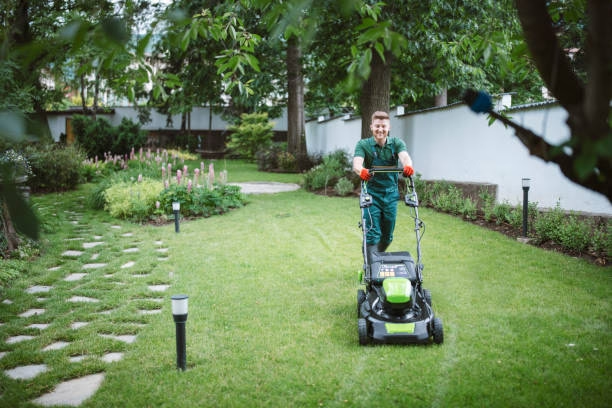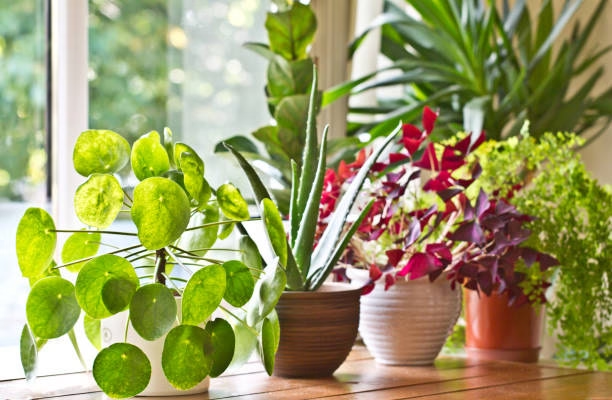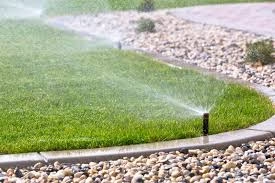Maintaining a healthy and vibrant garden doesn’t have to be a daunting task. With just a few simple steps, you can ensure that your garden stays beautiful, flourishing, and free of common issues that affect plant health. These easy-to-follow garden maintenance tips will help you maintain your garden efficiently while promoting healthier plants.
Whether you’re a beginner or an experienced gardener, these tips will help you keep your plants healthy and your garden looking its best throughout the year.
1. Water Wisely
Watering is essential for healthy plants, but it’s easy to overwater or underwater if you’re not careful. The key is to water deeply but infrequently, allowing the soil to dry out slightly between waterings. Overwatering can lead to root rot and attract pests, while underwatering causes plants to become stressed.
- Tip: Water your garden in the early morning or late evening to minimize evaporation and give your plants enough time to absorb the moisture. Ensure that water reaches the roots, which is where it’s needed the most. A soaker hose or drip irrigation system can be a great tool for watering deeply and efficiently.
When watering potted plants, ensure that the pots have proper drainage. If water accumulates at the bottom, it can drown the roots and cause plant health issues.
2. Feed Your Plants with Nutrients
Just as we need food to stay healthy, plants also need nutrients to thrive. Regular feeding is essential to replenishing the nutrients in the soil, especially if you’re growing heavy feeders like vegetables or flowers.
- Tip: Use a balanced fertilizer to provide essential nutrients such as nitrogen, phosphorus, and potassium. Organic fertilizers like compost or well-rotted manure are excellent options for enriching the soil with nutrients. Applying slow-release fertilizers ensures that plants receive a steady supply of nutrients over time.
Make sure to follow the recommended guidelines on fertilizer packaging, as overfeeding can lead to nutrient imbalances, and underfeeding may stunt plant growth.
3. Mulch for Moisture Retention
Mulching is one of the easiest and most effective ways to promote healthy soil and plants. By applying mulch to your garden beds, you can help conserve moisture, reduce weed growth, and regulate soil temperature.
- Tip: Apply a 2-3 inch layer of mulch around your plants, keeping it away from the stems and trunks. Organic mulch, such as shredded leaves, bark, or straw, will gradually break down and enrich the soil as it decomposes.
Mulch helps to prevent water from evaporating too quickly, making it easier for plants to absorb moisture. It also helps to suppress weeds that would otherwise compete for nutrients and space.
4. Keep an Eye on Pests
Pests are a common issue for gardeners, but you can easily manage them by keeping a close watch on your plants. Early detection is key to preventing pests from causing significant damage to your garden.
- Tip: Regularly inspect your plants for signs of pest infestations, such as holes in leaves, discolored foliage, or visible insects. For mild infestations, you can remove pests by hand or use a gentle spray of water to wash them off.
If pests persist, consider using organic pest control methods such as neem oil, insecticidal soap, or diatomaceous earth. Encourage beneficial insects like ladybugs, which help control aphids and other pests naturally.
5. Prune and Deadhead Regularly
Pruning and deadheading (removing dead flowers) are essential for maintaining the health and appearance of your plants. Pruning removes dead or damaged growth, which encourages new growth and improves airflow, reducing the risk of fungal infections.
- Tip: Prune your plants in the early spring or late winter, depending on the species. Remove any dead, diseased, or crossing branches to allow for better airflow and light penetration. Always use sharp, clean tools to make precise cuts that won’t damage the plant.
Deadheading flowers, particularly annuals, encourages them to produce more blooms. By removing spent flowers, you prevent the plant from wasting energy on seed production and help maintain a tidy, vibrant appearance.
6. Improve Soil Health with Composting
Healthy soil is the foundation of a thriving garden. Over time, soil can become depleted of essential nutrients, leading to stunted growth and poor plant health. Composting is an easy way to enrich your soil with organic matter, improving its texture, moisture retention, and nutrient content.
- Tip: Start a compost bin to recycle kitchen scraps (such as fruit and vegetable peels) and yard waste (like leaves and grass clippings). The organic matter will break down into nutrient-rich compost that you can add to your garden beds to improve soil health.
In addition to composting, consider using organic mulch to feed the soil. As mulch breaks down, it adds valuable nutrients and improves soil structure.
7. Regularly Check for Weeds
Weeds are a gardener’s worst enemy because they compete with your plants for space, nutrients, and sunlight. Regularly removing weeds is essential to keeping your garden healthy and ensuring that your plants have enough resources to grow.
- Tip: Weed your garden by hand or with a hoe to ensure that weeds are removed from the root, preventing them from regrowing. The best time to pull weeds is when they are young and have not yet set seeds.
Using mulch or landscape fabric can also help reduce weed growth by blocking sunlight from reaching weed seeds. In addition, weed control fabric is a great option for garden beds where you don’t want to disturb the plants.
8. Protect Plants from Extreme Weather
Extreme weather conditions, such as heavy rain, intense heat, or frost, can take a toll on your garden. Protecting your plants from harsh weather ensures they can continue to grow healthily.
- Tip: During periods of extreme heat, provide shade for sensitive plants using garden fabric or shade cloth. If you’re expecting frost, cover tender plants with frost blankets or burlap sacks to protect them from the cold.
For plants in pots, consider moving them to a sheltered location during a storm or heatwave. If you’re growing vegetables or herbs, be sure to harvest them before the weather turns unfavorable.
9. Rotate Crops for Better Yields
If you grow vegetables or annual plants, crop rotation is an important practice that helps maintain soil health and reduce the buildup of pests and diseases. Rotating crops ensures that your garden’s soil doesn’t become depleted of specific nutrients and helps prevent soil-borne diseases from spreading.
- Tip: Avoid planting the same family of crops in the same location year after year. For example, if you planted tomatoes in a specific spot this year, consider planting beans or lettuce there next season. This practice promotes soil fertility and reduces pest problems.
Crop rotation is particularly important for vegetable gardens, as many pests and diseases are specific to certain plant families.
10. Keep Your Garden Clean and Tidy
A well-kept garden not only looks beautiful but also helps plants grow better by preventing pests and diseases. Keeping your garden clean means removing dead plant material, fallen leaves, and debris that could harbor pests or mold.
- Tip: Clean your gardening tools regularly to prevent the spread of disease. Keep your garden tidy by removing dead plants and debris from garden beds, and dispose of them properly (preferably in a compost bin or green waste container).
If you’re growing perennials, consider dividing them every few years to ensure they stay healthy and don’t overcrowd each other.
Conclusion
Simple garden maintenance practices can have a significant impact on the health and beauty of your garden. By focusing on key tasks such as watering, feeding, pruning, and controlling pests, you can create a thriving garden with minimal effort. Regular maintenance also helps prevent common problems like weeds, diseases, and poor growth, ensuring your garden remains vibrant throughout the year.
With these straightforward tips, you’ll be able to maintain a healthier garden with ease. Whether you’re new to gardening or a seasoned pro, these basic practices will make all the difference in the success of your garden.




